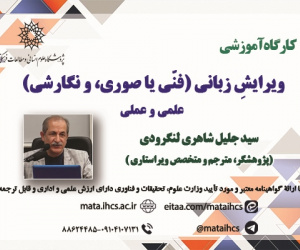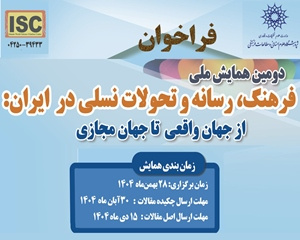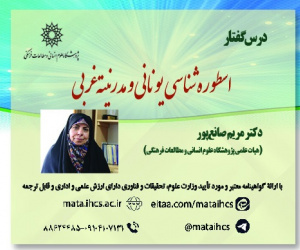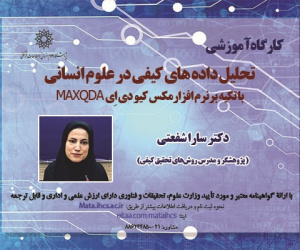قلی خان، خان نبود: اندر حکایتِ کتابِ علوم شناختی دین نوشته نعیمه پورمحمدی
آرشیو
چکیده
پژوهش در هر موضوعی یعنی پژوهشگر حاصل تحقیقاتش را به مخاطبان عرضه کند و سهمش در نوشته کاملاً از سهم پژوهش های قبلی مشخص باشد، به گونه ای که خوانندگان به روشنی متوجه شوند چه بخش هایی از نوشته حاصل تحقیقات پژوهشگر است و کدام قسمت ها حاصل پژوهش های دیگران. نقد نوشته هایی که این شرط لازم را رعایت نکرده اند و نشان دادن رونوشت ها و اقتباس ها از دیگران بی تردید در ارتقای سطح کیفی نوشته های پژوهشی تأثیر دارد. در مقاله حاضر کتاب علوم شناختی دین، تألیفِ نعیمه پورمحمدی، از این منظر نقد شده است. نگارندگان مقاله پس از مقایسه بخش های چشمگیری از این کتاب با برخی منابعِ معروف و معتبر که در حوزه علوم شناختی دین به زبان انگلیسی نوشته شده، به این نتیجه رسیدند که بخش مُعظَمِ کتاب از آن منابع انگلیسی ترجمه یا برگرفته شده و حاصل تحقیقات «مؤلف» نیست، تا جایی که بهتر است به جای «تألیف» از عنوان «کتاب سازی» استفاده کنیم و به جای «مؤلف» از «مؤلف نما». نعیمه پورمحمدی با استفاده از مطالب چند منبع محدود و کنار هم گذاشتن آن ها کتابی ساخته و آن را به اسم «تألیف» به نام خود منتشر کرده است. بخش های مختلف کتابِ علوم شناختی دین به سه شکل گرد آوری شده است: (۱) بخش هایی که عیناً، گاه ده ها صفحه پشت سر هم، ترجمه کامل و یکپارچه از منابع دیگر است؛ (۲) بخش های دیگری که ترجمه جسته گریخته، دل بخواهی و گزینشی از دیگر منابع است؛ (۳) بخش هایی که اگرچه ترجمه کامل یا گزینشی نیست، اما کپی محتوایی از دیگر منابع است، بدین شکل که گویا مطالب از گردآورنده است، ولی در واقع از دیگران است. ارجاع های کور و گمراه کننده مؤلف به گونه ای است که خواننده غیرمتخصص به هیچ وجه متوجه نمی شود که چه اتفاقی دارد می افتد و همه مطالب را حاصلِ تحقیقات مؤلف به شمار می آورد. به طور خلاصه، می توان گفت این کتاب انتحالی بزرگ و نوعی کتاب سازی و کپی کاریِ ناشیانه در عالَم پژوهش است و «مؤلف» تقریباً هیچ سهمِ درخوری از این کتاب ندارد. گرچه با وجود مشکل اصالت، که اشکال اصلی کتاب است، نوبت به نقد ساختاری و محتوایی نمی رسد، اما کتابِ علوم شناختی دین از این حیث نیز حاوی اشکالات جدّی و بعضاً مضحک است که در بخش دوم مقاله به اختصار به این موارد نیز اشاره کرده ایم.A Review of the Book "Cognitive Science of Religion" by Naima Pourmohammadi
Research in any field requires that the researcher clearly distinguishes their contributions from previous work, so that readers can easily identify which parts of the text are the result of the researcher’s own efforts and which parts are derived from others' research. Critiquing works that do not adhere to this essential requirement and identifying instances of copying and plagiarism undoubtedly contributes to improving the quality of research writing. This article critiques the book "Cognitive Science of Religion" authored by Naima Pourmohammadi from this perspective. The authors of this article compared significant portions of the book with several well-known and reputable sources in the field of cognitive science of religion written in English. They concluded that a substantial portion of the book is translated or adapted from these English sources and is not the result of the "author's" own research, to the extent that it would be more appropriate to use the term "book fabrication" instead of "authorship" and "pseudo-author" instead of "author." Naima Pourmohammadi assembled the book by using content from a few limited sources, assembling them, and publishing it under the guise of "authorship." The various sections of the "Cognitive Science of Religion" book are compiled in three ways: (1) sections that are complete and uninterrupted translations of other sources, sometimes spanning dozens of pages; (2) sections that are fragmented, selective, and arbitrary translations from other sources; (3) sections that, although not complete or selective translations, are content copies from other sources, making it appear as if the content is from the compiler, but in fact it is from others. The author's misleading and deceptive references are such that a non-specialist reader would not realize what is happening and would consider all content as the result of the author's research. In summary, this book represents a major act of plagiarism and a form of clumsy book fabrication and copying in the realm of research, with the "author" contributing almost nothing of value. Although the book's lack of originality is a primary issue, structural and content-related critiques are also warranted, as the book contains serious and sometimes ridiculous flaws, which are briefly addressed in the second part of the article.







